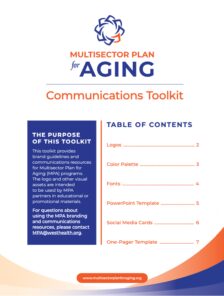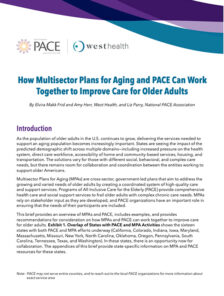Telehealth

Increase telehealth utilization among seniors through healthcare and community support organizations.
Ensure older adults are at the center of healthcare decision-making and the telehealth experience by accounting for their care preferences, goals, abilities, support systems, and health conditions.
Enable equitable access to high-quality telehealth regardless of geography, physical and cognitive ability, socio-economic status, health, or technology literacy.
Integrate and coordinate telehealth across the care continuum.
Guiding Principles to Advance Age-Inclusive Telehealth.

Telehealth services should be used to care for older adults who could benefit tremendously by its effectiveness and convenience for certain medical issues. However, guidance on best practices with this population is lacking.
In 2021, West Health Institute, the University of Virginia, and the Mid-Atlantic Telehealth Resource Center established the Collaborative for Telehealth and Aging (C4TA), which gathered experts from health systems, academic institutions, member organizations, and non-profit foundations focused on aging. This collaboration of leaders developed a set of provider-focused principles and guidelines, implementation tools, and best practices for using telehealth with older adults.
The challenges older patients experience with telehealth aren’t insurmountable; they can be addressed by designing remote care in a more intentional way.
Liane Wardlow, Ph.D.
Senior Director, Clinical Research & Telehealth, West Health Institute
Driving the Adoption of Age-Inclusive Telehealth.
The Pledge of Support for Age-Inclusive Telehealth Practices is a way for organizations to demonstrate their public commitment to providing and advocating for telehealth services that are age-inclusive and guided by the principles of equity and accessibility, person-centeredness, and integration and coordination of people and systems for older adults.
Over 40 health systems, provider groups, aging advocates, and philanthropic leaders across the nation have pledged their commitment to the Principles and Guidelines for Telehealth and Aging. Together, they raise awareness of the needs of older adults and ensure that all older adults have access to high-quality, safe, and effective telehealth.

![PBM Summary 04.10.24[32] thumbnail](https://s8637.pcdn.co/wp-content/uploads/2024/04/PBM-Summary_04-10-2432-pdf-image-224x296.jpg)







